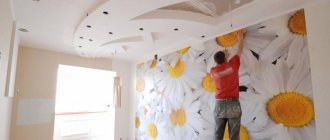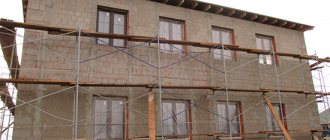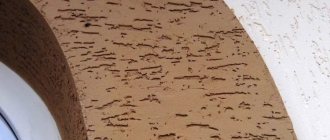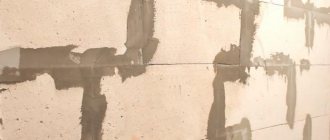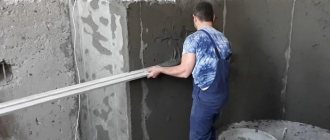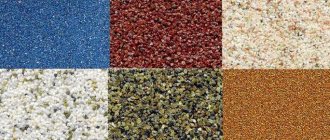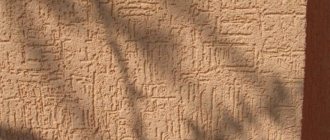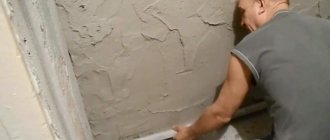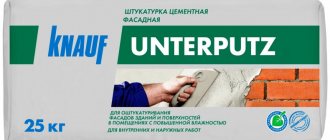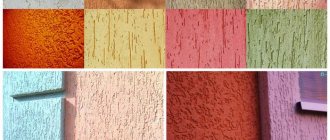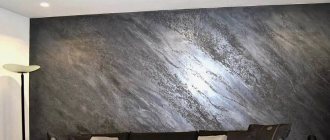Facade decorative plaster is a variety of plaster mixtures designed for finishing external walls, plinths, decorating retaining walls, gazebos and fences. The external decoration of the house may not be as intricate as the decor of the premises, but it is no less important, because the house represents its owners to everyone who happens to be nearby. But the main thing is the pleasure the owner feels when looking at his home. Decorative plaster of a facade is a special area of plastering work associated with the quality of the materials used, the scope of work, and production conditions.
Types of facade plasters
Outdoor conditions, in which decorative coatings need to protect house structures and perform aesthetic functions, differ markedly in their severity from indoor conditions. A wide range of temperatures, hail, other precipitation, the heat of the sun, a polluted environment - all this requires special qualities from decorative compositions. We need high strength and long-term resistance to various types of impacts. Therefore, special compounds are used for facade work. The types of decorative plaster that are used for the facade of a house have the same binders as mixtures for plastering indoors.
They are divided according to the type of binder into:
- silicate mixtures;
- acrylic materials;
- mineral mixtures;
- silicone solutions;
- magnesian.
Do-it-yourself facade decorative plaster can be made on any base except magnesium.
Mineral
Plasters such as cement, lime, and gypsum are mineral in origin. Not all of these binders are equally widely used for facade work due to their properties.
Most often, cement types of plaster are used for street work; gypsum plaster mixtures are practically not used.
Advantages of mineral mixtures:
- high coating strength,
- fire safety,
- excellent water-repellent properties,
- environmental friendliness,
- good sound absorption,
- good heat insulator
- resistance to biological damage,
- excellent adhesion to materials of any kind,
- frost resistance,
- steam conductivity,
- cheapness.
Disadvantages: poor vibration tolerance
Acrylic
Acrylic mixtures contain acrylic resins, modifiers, fillers, and dyes. After drying, a decorative coating is formed, characterized by excellent strength, elasticity and longevity. Due to the elasticity of the coating, it is impact and wear resistant. They accumulate static, and with it dust. A primer is required for acrylic mixtures. They are inferior to mineral compositions in terms of resistance to UV rays, vapor permeability and efficiency.
Acrylic solutions are pleasant to work with. Undried unsuccessful strokes can be washed off and new ones applied. However, the lifespan is short, so you need to work very quickly. Ready-made mixtures are available in a wide variety of colors.
Silicate
Potassium/sodium silicates have become the basis of silicate plaster mortars. Unique among other types of good adhesion to mineral wool and polystyrene foam materials. When other types of mixtures are attached to the base by gluing, silicate mixes adhere to it due to the reaction between the base and potassium glass. They have good heat and sound insulation qualities, and high resistance to frost and heat. They are not afraid of dirt and water and remain clean for a long time. The best compositions for vapor permeability. Fireproof, durable. Able to fade in the sun. They are susceptible to the formation of small cracks because they are inelastic.
The main drawback when working is that they set very quickly, so you need to work with silicate mixtures very quickly, efficiently, apply the solution and add texture in one pass at once. There is no need to take breaks. Always lay in a thin layer. Does not mix with other types of compounds. Requires a silicate primer.
You need to be careful when diluting dry mixtures - do not mix too quickly, otherwise air bubbles that do not have time to escape will get stuck in the solution.
With repeated mixing, you need the same proportion of dry powder and water, then adjacent areas of the coating will not differ visually. Produced in dry and ready-made form. Only inorganic pigments are used for tinting.
Price
| Name | Price |
| Installation of insulation | from 250 rub/m2 |
| — Glue for insulation | from 110 rub/m2 |
| — Facade dowel | from 50 rub/m2 |
| — Mineral wool 50 mm (insulation) | from 275 RUR/m2 |
| Dust removal, priming | from 50 rub/m2 |
| - acrylic primer | from 15 rub/m2 |
| Plaster and adhesive reinforcement on fiberglass mesh | from 350 rub/m2 |
| — Fiberglass mesh | from 50 rub/m2 |
| — Plaster-adhesive mixture | from 150 rub/m2 |
| Decorative plaster application: | from 400 rub/m2 |
| — Acrylic primer | from 30 rub/m2 |
| — Decorative plaster | from 110 rub/m2 |
| — Facade paint | from 50 rub/m2 |
| Materials | from 840 rub/m2 |
| Job | from 950 rub/m2 |
| Turnkey work, total | 1890 rub/m2 |
- Wet facade. Technology and cost of work.
- Insulation of the facade from.
What types of textures are there?
Modern plaster compositions allow a variety of textures for finishing facades.
In addition to rustic finishing, applying relief patterns with a roller or stencil, other types of textures are used:
- fur coat;
- bark beetle effect;
- American;
- rain texture;
- under travertine;
- imitation wood surface;
- imitation of stone or brick masonry;
- mosaic plaster;
- sgraffito and others.
Textures are created either due to technology, or due to technology and the structure of the plaster mortar at the same time.
Textured mixtures
Facade decorative colored plaster, on any binder with sand and lime filler, as well as with the addition of coloring pigments, is used to improve surfaces made of brick, porous blocks, lightweight concrete or tuff, as well as other wall materials. The plaster layer is given the desired shape using tools and devices.
Unusual relief images using compositions of several colors are obtained using the sgraffito technique. Several differently colored compounds are applied alternately in layers. After 6 hours, until the top layer has hardened, it is cut off in the right places. This exposes the underlying layer of a different color. The drawing is colored and embossed.
In rare cases, a Venetian pattern is made on the façade walls.
It's connected:
- with the complexity and duration of work,
- large area of façade surfaces,
- the need to protect the finish during application from rain jets and the rays of the scorching sun,
- the high cost of mixtures for the Venetian.
Among modern developments, you can pay attention to the French decorative mixture and the decopierre technique. The plaster composition is applied to the walls mechanically, then using a spray gun it is painted in the color of natural stone, and pressed down a little with a soft roller in a fabric cover. Once the mortar has set, the “seams” between the stones are cut out with a specially made scraper or chisel. As a result, they turn out to be whitish in color, and the wall looks like ancient stonework.
Structural
The use of structural compositions allows you to obtain different textures. Most Popular
- “Bark beetle”, formed by rolling stone grains contained in the mass of the structural mixture. The furrowed relief resembles wood with passages of borer beetle larvae.
- “Fur coat”, formed in various ways from different compositions.
- “Lamb”, formed by using structural mixtures with filler of different fractions.
Stone chips
The crumbs included as a filler in plaster mixtures are obtained from waste from processing various rocks. Most often it is marble. The crumb grains usually have a crushed, acute-angled shape and can be one color or a mixture of colors.
From a pebble mixture with fractionated large grains, a “grain” texture with a finely tuberous surface is obtained. If the mixture has a transparent acrylic or silicone base, the grains of single-color stone grains look like a mosaic coating.
Stone chips are part of terrasite mixtures. They also contain lime, quartz sand, mica particles, and cement. The almost hardened applied coating is treated with a sandblaster or manually with a nail brush. After treatment, the coating surface looks like tuff or untreated sandstone.
Fur coat for home
Do you like fur coats? Better yet, give it to your wife! This type of plaster is gradually becoming a thing of the past.
On small buildings, the fur coat does not look very neat, even rough. However, the texture of a fur coat gives large country houses, estates or administrative buildings a special charm and a certain antique quality.
This type of plaster consists of dolomite chips up to 3 mm in diameter. Apply with a roller or trowel, forming pointed edges similar to wet short fur.
Workplace and necessary tools
Do-it-yourself decorative plaster of the facade has a number of features that should be taken into account when preparing the workplace. First of all, this involves large volumes of work at height. In order to plaster the upper part of the facade of the house, ladders are not suitable. We need reliable scaffolding. They must be of sufficient width and length to allow:
- in one pass to continuously cover the required area,
- conveniently place fixtures, tools, containers for solution,
- work together.
It is also necessary to ensure a water supply to the place where dry mixtures are diluted. When working mechanically, a special place must be allocated for washing the hose. It is also necessary to provide for the ability to quickly protect the working surface from sudden rain. The workplace and the surface to be treated should be protected from the sun's rays.
To protect the skin of your hands and eyes when working, you need to use protective equipment. You need gloves, a respirator and goggles. It is advisable to have a container of clean water and a clean towel nearby so that you can immediately wash your eyes if the solution gets in contact.
Large areas of facade work can be processed manually or mechanically, for example, for a fur coat you can use a barrel organ or a plaster gun. To decorate the facade of a house with your own hands, you may need a variety of tools, auxiliary materials and devices. Basic tools and accessories:
- plastic or metal spatulas;
- trowels,
- brushes,
- rollers,
- level,
- devices for applying texture - stamps, matrices with textured elements, crumpled polyethylene, stencils, etc.,
- containers,
- masking tape,
- mixer,
- sandpaper.
Mosaic
An interesting type of decorative facade plaster that deserves special attention. As a rule, mosaics are made from silicone or silicate plaster with the addition of coarse inclusions in the form of crumbs from 0.8 to 3 mm.
This crumb can be made of marble, granite, quartz and even semi-precious stones - lapis lazuli, charoite and malachite. Here you do not need to create a pattern on the facade with your own hands. The texture and unique pattern is created by itself thanks to colored inclusions of stones.
Features of preparing the base material
A house may have walls made of various materials. Each of the materials sets its own conditions and also requires a certain finishing technology. Read more about how to prepare the base for working with decorative plaster.
When working with any base, remember to reinforce the corners. You can use a special corner for this.
Insulation
Penoplex, expanded polystyrene and mineral wool have a surface that should be “dressed in a corset” before finishing. For this purpose, an adhesive reinforcing layer with fiberglass mesh is used. The adhesive composition is applied to the surface of the insulation with a layer of 5-6mm. The layer is “combed” with the serrated edge of the trowel. A mesh is placed over the glue, pressed and secured with thin short sticks in the corners. The mesh sections are overlapped (10 cm). At the corners of the house, the mesh is applied in 2 layers or special profiles are used. Having buried the mesh into the layer with a spatula, smooth its surface with a plastic trowel. After the glue has dried, you need to apply a primer that is chemically suitable for the composition of the finishing layer.
For finishing in this case, silicone, silicate or mineral (cement) compounds are often used, less often acrylic plaster is used, since it does not “breathe” well. It is important that the materials of the insulation, “casing”, primer and solution are combined with the parameters of thermal expansion and have approximately the same hygroscopicity and thermal conductivity. Then the finishing layer will not crack.
Consumption of plaster mixtures
Experienced builders definitely pay attention to this parameter. After all, the amount of material purchased depends on it. On the packaging, manufacturers must indicate the material consumption in the form of a fork of two numbers. The spread is sometimes quite large. This depends on the quality of the finished base, its evenness, and the fraction of fillers.
- Mineral – 2.5-4 kg/m².
- Acrylic – 1.5-3 kg/m².
- Silicone - 2.5-3 kg/m².
The manufacturer must indicate the material consumption on the packaging Source stroimdom.com.ua
Painting and finishing methods
If the finishing was not made of colored plaster, then the surface of the coating must be painted. The paint protects decorative plaster from atmospheric influences. Lime coating requires three-layer painting, other compositions require two-layer painting. Each layer of paint must dry before applying the next.
To ensure that decorative plaster for facades does not require painting every year, you need to choose the right paint. It is desirable that it “breathes”, combines with the plaster material, and does not fade. Silicone and acrylic paints are considered the best for facades.
Painting compositions are applied with a spray gun or manually (roller, brush). The direction of paint application should not be constant. If one layer was painted with horizontal movements, then the second should be applied with vertical movements. There should be no interruptions during the application of one layer.
When doing the work yourself, they often use a regular roller.
Another creepy story about how Andrey plastered a wooden house.
Here's another façade horror story. One day a customer called us and introduced himself as Andrey. He said that he had a large and good frame-and-panel house. But he always dreamed that the house would look like an estate, in a classic style. And Andrey asked to insulate his house and decorate it with a plaster facade.
And our facade specialist Alexey told Andrey that he shouldn’t decorate his wooden house with plaster, something bad might happen, the plaster might peel off.
Andrey did not listen and called another company, where they did not refuse him, but gladly did the insulation with a wet facade, as Andrey had always dreamed of.
Not even a year has passed, and only one winter has passed, and Andrei is crying bitter tears. His beautiful plaster facade was cracked, and he paid a lot of money for it. Now Andrey will live in this house and look at the cracks and chips for many years.
And now closer to reality. What was wrong? Construction materials are of high quality. Resin-based facade paint. Professional facade designers from a construction company. The weather was great. Why then did the façade crack?
Alexey told Andrey that it is better to clad wooden houses with siding rather than decorative plaster. The fact is that wood absorbs moisture from the air and periodically swells. Wooden walls “breathe”, contracting and expanding in their structure due to changes in temperature and humidity. Due to such physical instability of the walls, there is always a risk of deformation of the plaster layer. Which is exactly what happened.
The moral of this tale is this - if you have already built a house from wood materials, do not create illusions about the classic plaster facade. Your option for insulation and cladding is siding.
Tips for working with plaster outdoors
Facade finishing is carried out under the following weather conditions:
- at a temperature not lower than +5оС and not higher than +30оС (this does not apply to winter plasters),
- in dry weather,
- at air humidity not higher than 70%.
In dry, hot weather, the plaster should be sprayed with water to prevent it from cracking. Plastering work should begin when several days without rain are expected. The treated area should be protected from sunlight.

